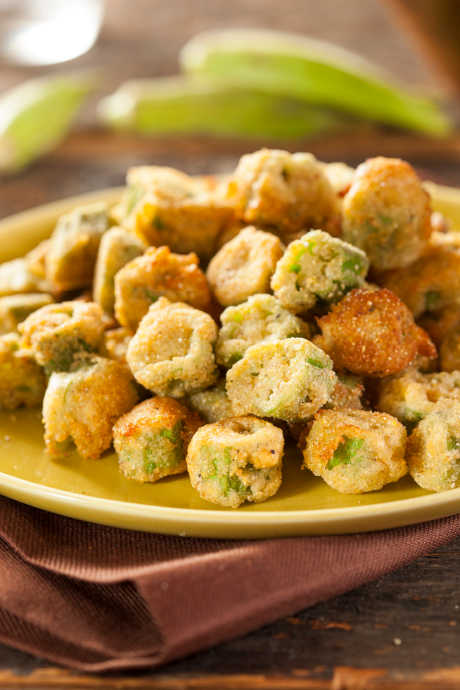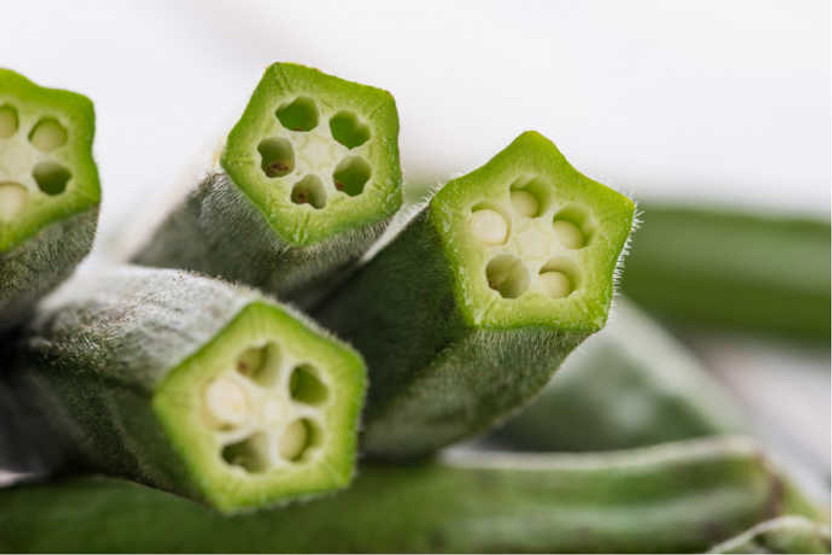The Southern Charm of Okra
Posted by Julie on Aug 26th 2020
We’ve covered other polarizing foods in the past, like beets, mushrooms, and rhubarb. Now it’s time to take on okra. If you live outside the South, it’s possible you’ve never even heard of okra, let alone tried it. In this post, we’ll explain what sets okra apart from other vegetables, along with how to choose, store, and cook it.
What Is Okra?
Like peppers, peas, and zucchini (among many other examples), okra is a fruit that’s considered a vegetable based on taste and usage. Okra seed pods are the edible part of tall, flowering plants. You can slice them lengthwise or into rounds, or add the entire pod to dishes. Okra is packed with vitamins and antioxidants, including vitamins A, B-complex, C, and K. Like most vegetables, it’s high in fiber and low in fat and calories.

Okra originally hails from Ethiopia and was brought to the US from Africa by enslaved people. It’s a tropical plant that loves heat and humidity, which explains why it’s prevalent in the South and why it’s a key ingredient in dishes from tropical regions. Greek, Indian, Creole, and Southern cuisine often feature okra.
Okra’s Ick Factor
The texture of cooked okra is what can make it objectionable. The most common complaint about okra is sliminess, which is due to mucilage, a thick, sticky secretion that’s involved in seed germination and food and water storage in mature plants. Nearly all plants produce mucilage, but some (like aloe vera, cactus, and okra) produce large amounts of it. The mucilage in okra is useful; it helps thicken soups and stews. But we understand if it’s just too viscous for your taste.

Since sliminess isn’t an especially appetizing quality, you can try a few different methods for reducing the slime when cooking okra. First, be sure to dry it thoroughly after washing. You can also soak it in vinegar before cooking. According to Food & Wine, another way to combat slime is to slice okra lengthwise instead of in rounds. Finally, pre-cook okra with dry heat by grilling, roasting, or sauteing, even if you’re going to add it to a liquid dish like soup or stew. Remember to cook in small batches to keep okra from steaming, which will only add to the sliminess.
How to Choose and Store Okra
Okra is a summer vegetable, so look for it at the grocery and farmer’s markets when the weather is warm. Choose okra pods on the small side, only a few inches long, as they will be younger and more tender. Bigger pods are older and tougher. You’ll also want to inspect okra for blemishes and browning; firm, bright green pods will taste best. Store okra in the refrigerator, wrapped in paper or plastic. The Spruce Eats also recommends letting okra come to room temperature before cooking, which is another slime-busting technique.
Ways to Prepare and Cook Okra
Ready to get started? If you’re feeling confident enough to go forth without a recipe, we’ve got two easy ideas from The Kitchn. One, slice that okra into strips and bake it in the oven. Two, pickle okra with vinegar and water, along with herbs and salt to taste. Both of these methods are also great ways to eliminate any slime.
If you’d rather rely on a recipe, we’ve got you covered. Check out these picks, hailing from the American South all the way to India.
Pan-Fried Okra in Cornmeal
Southern Living is one of our go-to resources for Southern staples (and even dishes that aren’t really Southern, like fried green tomatoes). Wash and dry your tender green okra pods, and slice them into rounds. Heat oil in your skillet, toss the okra in the oil with salt and pepper, and then sprinkle it with cornmeal and a dash of cayenne pepper. Remember not to crowd the pan, so the okra fries instead of steaming, which will make it soggy instead of crispy.

Succotash
Another Southern favorite is succotash, which is traditionally made with okra, lima beans, corn, and diced tomatoes. We’re partial to this recipe from Grandbaby Cakes for a few reasons. One, she starts by frying bacon, and sauteing onions and peppers in the leftover bacon grease. Then, she adds all three of these ingredients to the succotash, which amps up the flavor. The okra is added last, and cooked just long enough to be tender. But if you’d rather not risk any slime, slice it into rounds and bake it first.
Okra and Sweet Corn Purloo
Don’t be put off by the name; purloo is the Lowcountry variation on a dish that’s found all over the world. The name may change depending on your location, but the combination of rice, vegetables, meat, and broth, along with local spices and seasonings, is comfortable and familiar.
Try this recipe via Food52, which starts on the stovetop and finishes in the oven. Saute onions, carrots, and peppers with herbs and garlic. Then add pre-cooked turkey or ham, sliced okra, and corn that’s been cut off the cob. Stir in some uncooked rice and cover everything with broth. Once the broth boils, transfer the dish to the oven, and cook until the rice is tender.
Bhindi Masala
With this recipe from Cook With Manali, you can turn fresh okra into an authentic Indian curry. Manali reiterates the importance of drying okra carefully, and she also suggests stir-frying it over medium heat to prevent sliminess. Her curry recipe is simple and straightforward, and it comes together quickly on the stovetop. It’s a great example of how mise en place comes in handy, since there’s not much time between steps to prep the next ingredients. Finally, don’t be anxious about trying your hand at Indian cooking. Manali includes step-by-step photos so you can see exactly how your dish will look as it comes together.

